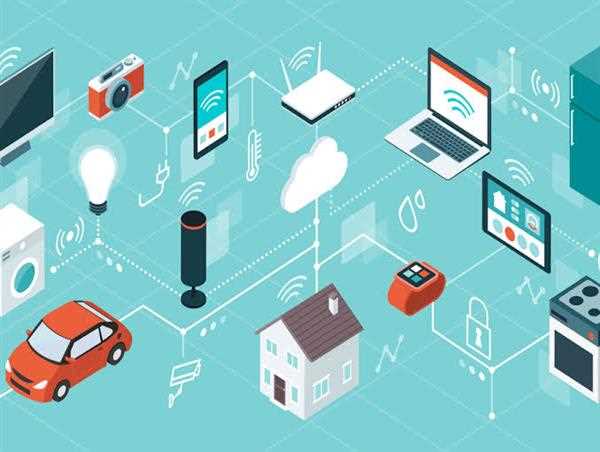The Internet of Things (IoT) encompasses a network of interconnected objects, including physical devices, vehicles, appliances, and other items that are equipped with sensors, software, and network connectivity. These devices collect and exchange data, enabling them to communicate and interact with each other, as well as with humans, over the internet.

IoT is revolutionizing the way we live and work by creating a highly interconnected and intelligent ecosystem. It has the potential to impact various aspects of our daily lives, from our homes and cities to industries and enterprises.
In the realm of smart homes, IoT allows for the automation and remote control of various devices and systems. Home appliances, thermostats, lighting, security cameras, and entertainment systems can be interconnected and controlled through smartphones or voice assistants. IoT enables energy efficiency, increased convenience, and improved security, as well as the ability to monitor and manage homes remotely.
IoT is transforming cities into smart cities, enhancing urban infrastructure and services. Smart traffic management systems can optimize traffic flow, reduce congestion, and improve road safety. Public utilities such as water and electricity can be monitored and managed more efficiently, resulting in reduced waste and improved sustainability. IoT sensors and devices can also enhance public safety, environmental monitoring, and waste management in urban areas.
In industries and workplaces, IoT is driving digital transformation and automation. Manufacturing processes can be optimized through the use of IoT-enabled sensors and devices, allowing for real-time monitoring, predictive maintenance, and improved operational efficiency. Supply chain management can benefit from enhanced tracking and inventory management, ensuring timely deliveries and reducing costs. IoT-powered wearables and devices can also enhance worker safety and productivity.
Healthcare is another domain significantly impacted by IoT. Connected devices such as wearable fitness trackers, smart medical devices, and remote patient monitoring systems enable continuous health monitoring and personalized care. Real-time health data can be collected, analyzed, and shared with healthcare professionals, leading to early detection of health issues, remote diagnosis, and timely interventions. IoT also enables telemedicine and remote consultations, providing access to medical expertise regardless of geographical location.
In agriculture, IoT enables precision farming and smart agriculture practices. Sensors and drones can collect data on soil conditions, weather patterns, and crop health, facilitating optimized irrigation, fertilization, and pest control. This leads to improved crop yields, reduced resource wastage, and more sustainable agricultural practices.
However, along with its benefits, IoT also raises concerns related to data privacy, security, and interoperability. The massive amount of data generated by IoT devices requires robust cybersecurity measures to protect sensitive information. Interoperability standards need to be established to ensure seamless integration and communication between different IoT devices and platforms.
In conclusion, IoT is a transformative technology that is changing the way we live and work. It connects physical objects and devices, enabling them to gather and exchange data, and opens up possibilities for automation, optimization, and enhanced decision-making. From smart homes and cities to industries, healthcare, and agriculture, IoT is revolutionizing various sectors, improving efficiency, convenience, and sustainability. However, careful consideration must be given to data privacy, security, and interoperability challenges to fully harness the potential of IoT in a safe and effective manner.